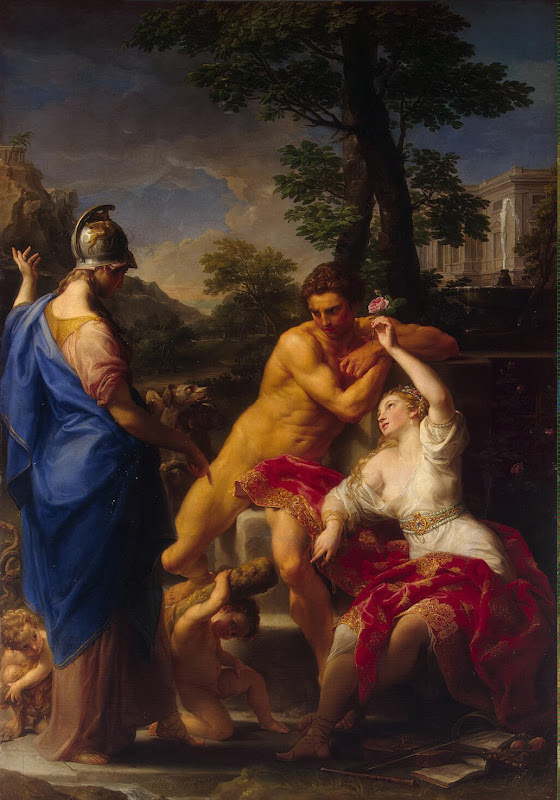Painting Detail
Hercules at the CrossroadsArtist: Pompeo Batoni
Medium: Painting, Oil on canvas, 245x172 cm
Date: 1765
Genre: Mythology, Religious
Source: Yusupov Palace Museum, Leningrad, 1925
Pompeo Batoni, leading Roman 18th-century painter, usually turned to the themes of civil and moral duty in his works, as in this excellent example of Hercules at the Crossroads. The Allegory of Hercules, forced to choose between Vice and Virtue, was composed in the 5th century BC.
When the young Hercules was minding the flock of his earthly father, King Amphion, on the mountains of Cithaeron, he was approached by two women, Tenderness and Virtue. In the painting they are embodied by two goddesses, Venus - goddess of Love, and Minerva - goddess of wisdom. One tempts him with the pleasures of life, the other calls him to labour and achievement. Hercules, after long thought, harkens to the voice of reason and devotes his life to the service of mankind. Of his great feats to come we are reminded by the putti at Minerva's feet, who hold the hero's club and his lion's skin. Here too we see the three-headed dog Cerberus, who guards the gates of Hell, and the seven-headed Hydra. Minerva points severely at the temple on the top of the hill, an allegory for the difficult path to glory. Venus, on the other hand, holds out a rose to Hercules, and scattered at her feet are the attributes of vanity and sensual pleasure - musical instruments and a basket of fruit.
